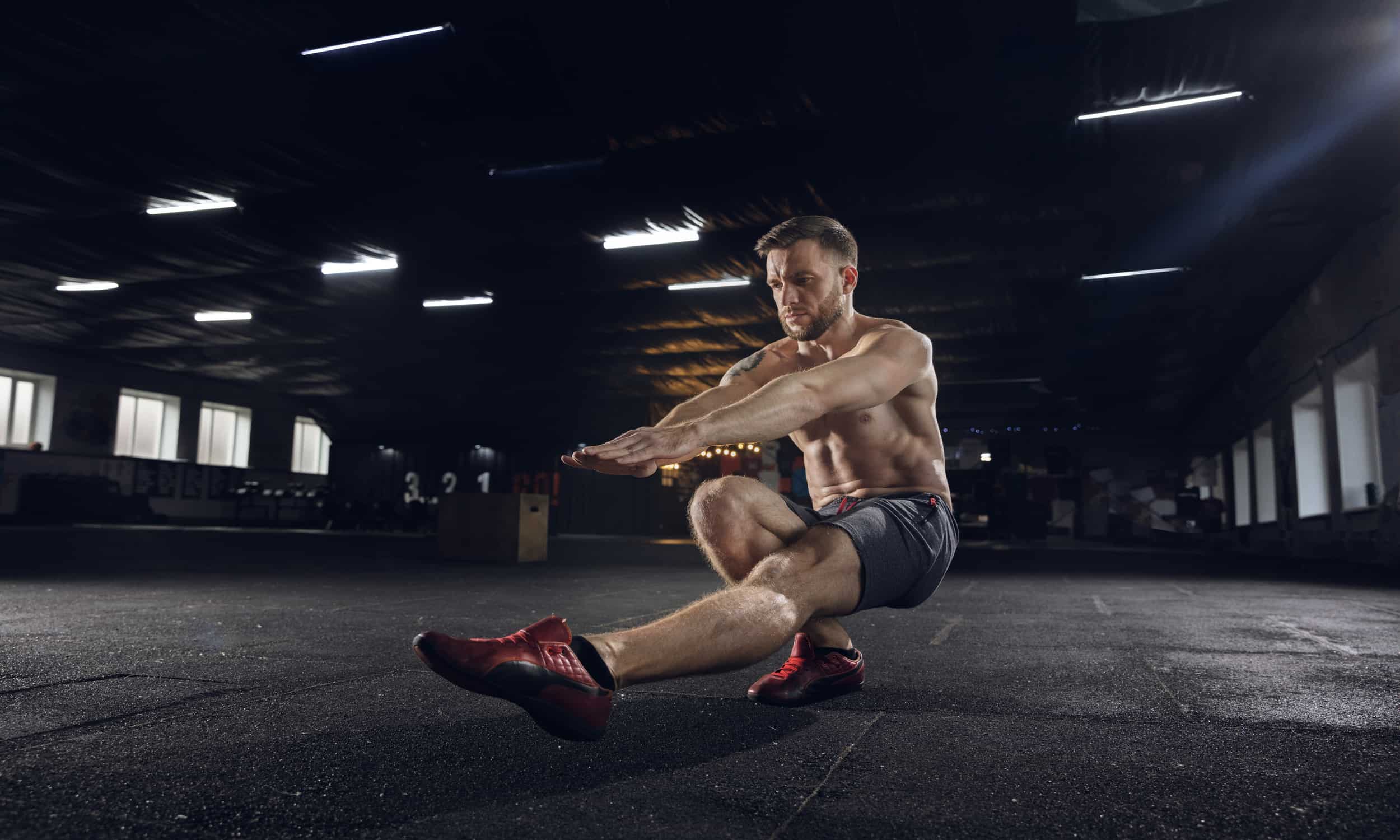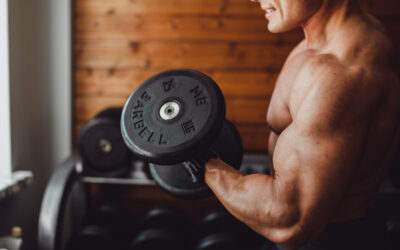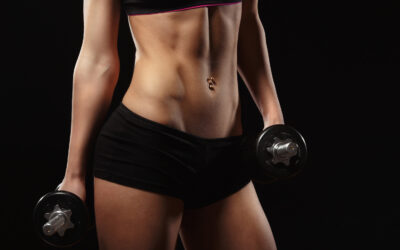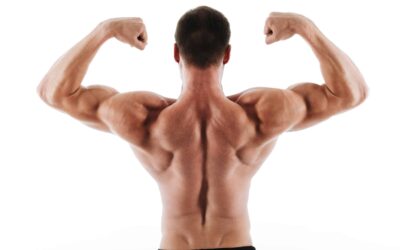When looking to strengthen the lower body, it can be easy to focus on the large, load bearing and powerful muscles such as the quadriceps, hamstrings, and glutes. But what about the calves? Why is it important to strengthen them and what are the best exercises for them?
In this article, we are going to break down what the calves are, what movements they are involved in and the best calf exercises to strengthen them.
Calf MUSCLES
The actual name of the calf muscle is the Gastrocnemius. As is the case with the naming of most of the muscles in the body, the name Gastrocnemius comes from the Latin language.
The name can be broken down into ‘Gaster’ (meaning belly) and ‘Kneme’ (meaning leg), referring to the muscle as the ‘belly of the leg’ in reference to the bulging shape of the muscle. To keep it simple in this article, we will continue to refer to the muscles as the calf.
You have two calf muscles, one on the left leg, and one on the right. The muscle is positioned on the back of the lower leg between the knee and the ankle.
It commences as two separate muscle heads at the top, called the Medial and Lateral heads. The medial head sits closest to the midline of the body, whilst the lateral head sits towards the outer edge of the body. The two heads come together part way down the leg before becoming part of the Achilles tendon.
Origin
The muscle originates in two positions, because of the two separate heads at the top of the muscle. The two muscle heads originate on the corresponding condyles of the femur, with the lateral head originating on the lateral condyle and the medial head originating on the medial condyle.
Because the calf muscle crosses the knee joint, attaching to the femur rather than the tibia or fibula, it has some impact on actions of the knee. This is also relevant to some of the exercises we will look at shortly, as knee positioning can impact on the way the muscle activates.
As the two heads come together, they combine with the deeper lying soleus muscle to form the Achilles tendon. The Achilles tendon inserts onto the calcaneus bone which forms the heel of the foot. This attachment point allows the calves to facilitate movement of the ankle joint.
Movements
As the calf muscles cross both the knee and ankle joints, they facilitate movement at both joints. With regards to the knee, the calves act as an accessory muscle to the larger muscles of the upper leg that primarily facilitate movement. When it comes to the ankle joint, the calves are a primary facilitator of movement.
Plantar Flexion
Plantar flexion is the movement at the ankle joint that involves ‘pointing’ of the toes. From a standing position, this would be the movement of moving onto tiptoes. The calves facilitate this movement when the contract as the Achilles tendon produces force at the Calcaneus, pulling the heel up off the floor. The opposing action of plantar flexion is dorsiflexion, which involves pulling the toes up towards the body.
Knee Flexion
Because the calf muscles cross the knee joint at the back, they do have some contribution to knee flexion. In comparison to the main facilitator of knee flexion (the hamstrings), the calves are much smaller and possess a much smaller lever at the joint, so act only as an accessory to the main movers as opposed to driving movement itself. This crossing of the knee joint though becomes relevant for some of the exercises we will look at shortly.
BEST EFFECTIVE CALF EXERCISES
Because of the relatively small size of the calf muscles in comparison to the other muscles of the lower body, their contribution to most of the compound lower body exercises is minimal. Because of this, it is important to complete specific exercises for the calves to ensure they are individually strengthened to reduce the risk of susceptibility to overuse injuries resulting from inefficiency of the muscle.
Even movements as simple as walking are benefited by improved efficiency of the calf muscles. A study of participants with intermittent claudication found that eight weeks of performing calf exercises three times per day improved walking performance without an increase in blood flow, evidence of improved efficiency of the muscles.
The following explains various best calf exercises that are helpful and you cannot miss.
Seated Bent Leg Calf Raise
Most gyms will have a seated calf raise machine which allows you to work the calf muscles in a bent-knee position.
The machine has 4 key components. Firstly, will be the weights bar – this is where you will add the desired weight, which should be done before sitting on the machine. Next, you will take a seat and place your feet up on the next key component, being a small platform. Your feet should be placed so that just your toes are on the platform, and your heels are not in contact with anything. The third component is the knee pads that will sit on your thighs. This will likely be on a swivel that you can bring back towards you. You will need to adjust the height of the pads to allow your thighs to fit under them. Finally, you will have the stopper, which holds the weight off you until you are ready to start.
Once in position, you will need to push up onto your toes to lift the weight off the stopper. Remove the stopper (it will also be on a lever) and allow the full weight to push your ankle into dorsiflexion. You then push up with the toes to perform the calf raise. When complete, at the top of the movement move the stopper back into place and lower the weight down.
This movement allows you to work the ankle through its full range of movement, with gravity and the weight eccentrically pushing the ankle into dorsiflexion, and the concentric movement of the ankle pushing the ankle into plantar flexion.
Variations of Seated Bent Leg Calf Raise
This exercise can be easily modified if a bent leg calf raise machine is not available and can easily be adapted to be done at home. All that is required is a suitable chair, a small step and some form of weight. This can be a dumbbell, a weighted plate, or any other item that can be placed across the thighs to provide resistance.
Standing Barbell Calf Raise
For a straight leg version of the calf raise, the standing barbell calf raise is an effective option. To perform the exercise, place a weighted bar across the upper back, resting on the shoulders. The exercise can either be performed from a flat surface, or similar to the bent calf raise on a small step (for greater range of movement).
The concentric movement involves moving into a tiptoe position, lifting the heels off the ground, while the eccentric movement involves resisting gravity back to the start position.
Depending on the weight being used, some form of rack may be required to set the bar up on and step under to place the bar, rather than lifting the weight from ground level and over the head into position.
Variations of Standing Barbell Calf Raise
If a barbell is not available, the exercise can easily be adapted to use dumbbells or any other items that can be held to provide a weight. The weight does not necessarily need to be placed across the shoulders; it is suitable to hold the weight by your side.
Leg Press Machine Calf Raises
A leg press machine can also be used to perform calf raises. To perform calf raises on a leg press machine, you first want to place your feet shoulder width apart on the foot plate and push out into full knee extension. You then need to move your feet down the plate so that just your toes remain in contact with it and allow the weight to push your ankle into dorsiflexion.
The concentric phase of the movement requires you to push through your toes into plantar flexion, whilst the eccentric phase is the controlled resistance of the load as you return to dorsiflexion.
CONSIDERATIONS
There are several things that need to be considered when performing calf exercises to ensure you achieve what you are aiming to get from the exercise.
Bent Leg or Straight Leg?
As mentioned earlier, the fact that the calf muscles cross over the knee joint means that the positioning of the knee can impact on the way the exercise challenges the muscle.
It has been found that there is a significant difference in the amount of ankle dorsiflexion that can be achieved with 20 degrees of knee flexion as opposed to no flexion of the knee. Beyond 20 degrees there is no significant difference with further flexion of the knee. The significance of this is that greater range of motion can be trained in the bent leg variations, as opposed to the straight leg variations.
Foot Positioning
A study of young male participants found that there is a significant difference in the muscle thickness results of the medial and lateral heads of the calf muscle based on the positioning of the feet.
The participants in the study were assigned a 9-week calf strengthening program in which one group performed the exercises with feet pointing inwards, one group kept their feet neutral, and the final group performed the exercises with their feet pointing outwards.
The results of the study found that whilst each variation saw increases in muscle thickness of both heads of the muscle, the group with feet pointing inwards saw significantly greater increases in the muscle thickness of the lateral head, while the group with feet pointing outwards saw significant differences in the thickness of the medial head.
Calf or Achilles injuries
Overuse injuries of the Achilles are common when there is weakness of the calf muscle, as the tendon is forced to take extra load. Achilles Tendinopathy is one such condition resulting from overuse of the calf muscle.
It can be tempting to avoid exercises for the muscle when there is pain present, however studies have found that performing eccentric exercises for the calves can provide improvement in pain levels, suggesting that there may be some benefit to include these exercises as part of the rehabilitation of this injury.
Stretching or Range of Motion Exercises
Tightness of the calves can contribute to conditions such as the Achilles Tendinopathy mentioned above, as well as Plantar Fasciitis which is an inflammation of the soft tissue structures under the foot.
As part of a suitable calf strengthening routine, it is important to also consider stretching/range of motion exercises to avoid tightness of the calf muscles, so as to avoid developing a chronic condition of the foot and ankle which can be painful and slow to recover.
KEY TAKEAWAYS
Whilst the calf muscles are only a smaller component of the lower body musculature, it is important to consider them as part of an overall strengthening routine. The most effective exercises are the different variations of calf raises which target the calves specifically, with variations available to allow for minimal equipment and different goals.
Article Sources
HealthxTips is committed to delivering content that adheres to highest standard for accuracy, sourcing and objective analysis.
HealthxTips uses only high-quality and trustworthy sources to support the facts in our articles.
1. Aloui, F. (2021, January 29). What is dorsiflexion? Do you know? HealthxTips. https://www.healthxtips.com/what-is-dorsiflexion/
2. Baumbach, S. F., Brumann, M., Binder, J., Mutschler, W., Regauer, M., & Polzer, H. (2014). The influence of knee position on ankle dorsiflexion – a biometric study. BMC musculoskeletal disorders, 15, 246. https://doi.org/10.1186/1471-2474-15-246
3. Glazer J. L. (2009). An approach to the diagnosis and treatment of plantar fasciitis. The Physician and sportsmedicine, 37(2), 74–79. https://doi.org/10.3810/psm.2009.06.1712
4. Jayaseelan, D. J., Kecman, M., Alcorn, D., & Sault, J. D. (2017). Manual therapy and eccentric exercise in the management of Achilles tendinopathy. The Journal of manual & manipulative therapy, 25(2), 106–114. https://doi.org/10.1080/10669817.2016.1183289
5. Nunes, J. P., Costa, B., Kassiano, W., Kunevaliki, G., Castro-E-Souza, P., Rodacki, A., Fortes, L. S., & Cyrino, E. S. (2020). Different Foot Positioning During Calf Training to Induce Portion-Specific Gastrocnemius Muscle Hypertrophy. Journal of strength and conditioning research, 34(8), 2347–2351. https://doi.org/10.1519/JSC.0000000000003674
6. Van Schaardenburgh, M., Wohlwend, M., Rognmo, Ø., & Mattsson, E. (2017). Calf raise exercise increases walking performance in patients with intermittent claudication. Journal of vascular surgery, 65(5), 1473–1482. https://doi.org/10.1016/j.jvs.2016.12.106








0 Comments